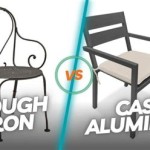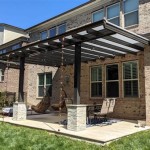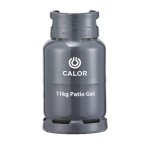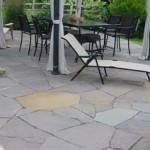```html
Patio Shade Canopy: Enhancing Outdoor Living Spaces
A patio shade canopy is a structure designed to provide protection from the sun and other elements, transforming outdoor spaces into comfortable and usable extensions of the home. These canopies offer a practical and aesthetically pleasing solution for creating shaded areas, allowing individuals to enjoy patios, decks, and other outdoor environments even during the hottest hours of the day. The versatility and diverse range of styles available have made patio shade canopies a popular choice for homeowners seeking to optimize their outdoor living.
The primary function of a patio shade canopy is to reduce the intensity of sunlight, thereby lowering the temperature beneath the canopy. This cooling effect makes outdoor spaces more inviting and functional, enabling activities like dining, relaxing, or entertaining guests. Beyond sun protection, some canopies also offer protection from light rain or wind, further enhancing the usability of the outdoor space in various weather conditions. The material, design, and installation of a patio shade canopy all contribute to its overall effectiveness and aesthetic appeal.
Key Benefits of Installing a Patio Shade Canopy
Implementing a patio shade canopy offers numerous advantages, contributing to both comfort and property value. Understanding these benefits is crucial for homeowners considering investing in this type of outdoor structure.
One of the most significant benefits is
sun protection
. Prolonged exposure to the sun's ultraviolet (UV) rays can be harmful, leading to sunburn, premature aging, and an increased risk of skin cancer. A patio shade canopy effectively blocks a substantial portion of these harmful rays, creating a safer and more comfortable outdoor environment. The degree of UV protection varies depending on the material used for the canopy, with some fabrics offering significantly higher levels of protection than others. For individuals with sun sensitivities or those who spend a considerable amount of time outdoors, this protection is invaluable.Another key advantage is
temperature regulation
. By blocking direct sunlight, the canopy reduces the amount of heat absorbed by the patio surface and surrounding area. This results in a cooler and more comfortable temperature beneath the canopy, making it possible to enjoy the outdoor space even on hot days. The improvement in temperature can also indirectly reduce energy consumption inside the home. By preventing the sun from heating the patio directly against the house, it can lessen the strain on air conditioning systems. The degree of temperature reduction will depend on factors like the canopy's design, material, and the surrounding environment.Finally, patio shade canopies enhance the
aesthetic appeal
of the outdoor space. They are available in a vast array of styles, colors, and materials, allowing homeowners to choose a canopy that complements the architectural style of their home and reflects their personal preferences. A well-designed canopy can transform a plain patio into an inviting and stylish outdoor living area. They can also add a sense of privacy and enclosure, creating a more intimate and relaxing atmosphere.Types of Patio Shade Canopies
The market offers a wide variety of patio shade canopies, each with its own distinct features, advantages, and disadvantages. Understanding the different types available is essential for selecting the best option for a specific patio space and individual needs.
Retractable Awnings
are among the most versatile types of patio shade canopies. These awnings can be extended or retracted as needed, providing shade when desired and allowing sunlight to reach the patio when shade is not required. They typically consist of a fabric canopy mounted on a frame that is attached to the house. Retractable awnings can be manually operated or motorized, with motorized options often including remote controls and sensors that automatically retract the awning in response to strong winds or rain. This type of canopy offers flexibility and convenience, but it can be more expensive than other options.Sail Shades
are a popular choice for their modern and stylish appearance. These canopies consist of triangular or rectangular fabric sails that are stretched between multiple anchor points, creating a visually appealing and effective shade structure. Sail shades are relatively easy to install and can be configured in various ways to provide shade in different areas of the patio. They are typically made from durable, weather-resistant fabrics that offer UV protection. Sail shades are a cost-effective option for adding shade and style to an outdoor space.Pergolas with Canopy Covers
combine the classic look of a pergola with the functionality of a shade canopy. Pergolas are open-roofed structures that provide partial shade and create a defined outdoor space. Adding a canopy cover to a pergola can significantly increase the amount of shade provided. The canopy cover can be made from various materials, including fabric, wood slats, or metal. Some pergola canopy covers are retractable, allowing for adjustable shade levels. This type of canopy offers a blend of aesthetic appeal and practical sun protection.Gazebos
are freestanding structures that provide complete overhead coverage. They typically have a solid roof and may include walls or screens for added privacy and protection from the elements. Gazebos are available in various sizes and styles, ranging from small, simple structures to larger, more elaborate designs. They offer a dedicated outdoor space that can be used for dining, relaxing, or entertaining guests. Gazebos provide excellent shade and protection from the rain, but they are typically more expensive and require more space than other types of patio shade canopies.Factors to Consider When Choosing a Patio Shade Canopy
Selecting the right patio shade canopy requires careful consideration of several factors, including the size and shape of the patio, the desired level of shade, the local climate, and the available budget. Evaluating these factors will help homeowners make an informed decision and choose a canopy that meets their specific needs and preferences.
The
size and shape of the patio
are crucial considerations. The canopy should be large enough to adequately shade the desired area, but it should not be so large that it overwhelms the space. Consider the shape of the patio and how the canopy will integrate with the existing landscaping and structures. For irregularly shaped patios, custom-designed canopies or multiple smaller canopies may be the best solution.The
desired level of shade
is another important factor. Some individuals prefer complete shade, while others prefer partial shade that allows some sunlight to filter through. The choice of fabric and the design of the canopy will affect the amount of shade provided. Darker fabrics and denser weaves offer more shade than lighter fabrics and looser weaves. Retractable canopies allow for adjustable shade levels, providing flexibility to adapt to changing weather conditions and personal preferences.The
local climate
should also be taken into account. In areas with strong winds or heavy rainfall, it is important to choose a canopy that is durable and weather-resistant. Canopies made from high-quality materials and designed to withstand the elements will last longer and require less maintenance. Consider features like wind resistance ratings and water-repellent fabrics. In areas with hot, sunny climates, choose a canopy with a high UV protection rating to protect against harmful UV rays.Finally, the
available budget
is always a consideration. Patio shade canopies range in price from relatively inexpensive sail shades to more expensive retractable awnings and gazebos. Determine a budget before starting the selection process and focus on options that fall within that range. Keep in mind that the cost of the canopy is not the only expense to consider. Installation costs, maintenance costs, and potential repair costs should also be factored into the overall budget. Weigh the initial cost against the long-term benefits and durability of the canopy to make a sound financial decision.Proper installation is essential for ensuring the safety and effectiveness of a patio shade canopy. Depending on the type of canopy, installation may require specialized tools and skills. It is often recommended to hire a professional installer to ensure that the canopy is properly secured and functions as intended. Regular maintenance, such as cleaning the fabric and inspecting the frame, will help prolong the life of the canopy and keep it looking its best.
```
Boen 16 Ft X Beige Square Shade Sail Canopy Awning Uv Block For Outdoor Patio Garden And Backyard Sh 40002 The Home Depot

12x16 Feet Rectangle Sun Shade Sail Uv Block Canopy

Beige 12ft X 17ft 180gsm Polyethylene Sun Shade Sail Canopy Windscreen4less

Vbvc Sun Shade Canopy Uv Block Awning For Outdoor Patio Garden Backyard Com

Triangle Shade Canopy Sun Durable Temu

8 10 12 16 Waterproof Rectangle Sun Shade Sail Fabric Canopy Patio Awning

Eagle Peak Outdoor Gazebo Pergola 10 Ft X With Retractable Sun Shade Canopy Beige 100 Bge Hd The Home Depot

Eqwljwe Shade Sails 13 X Triangle Sun Sail Canopy Awning Fabric Cloth Screen Uv Block Resistant Heavy Duty Commercial Grade Outdoor

Sun Shade Sails For Patios Outdoor Areas Van Nuys Awning

Shade Sails An Easy Diy Guide To Installing Your Own Reviewed
Related Posts








